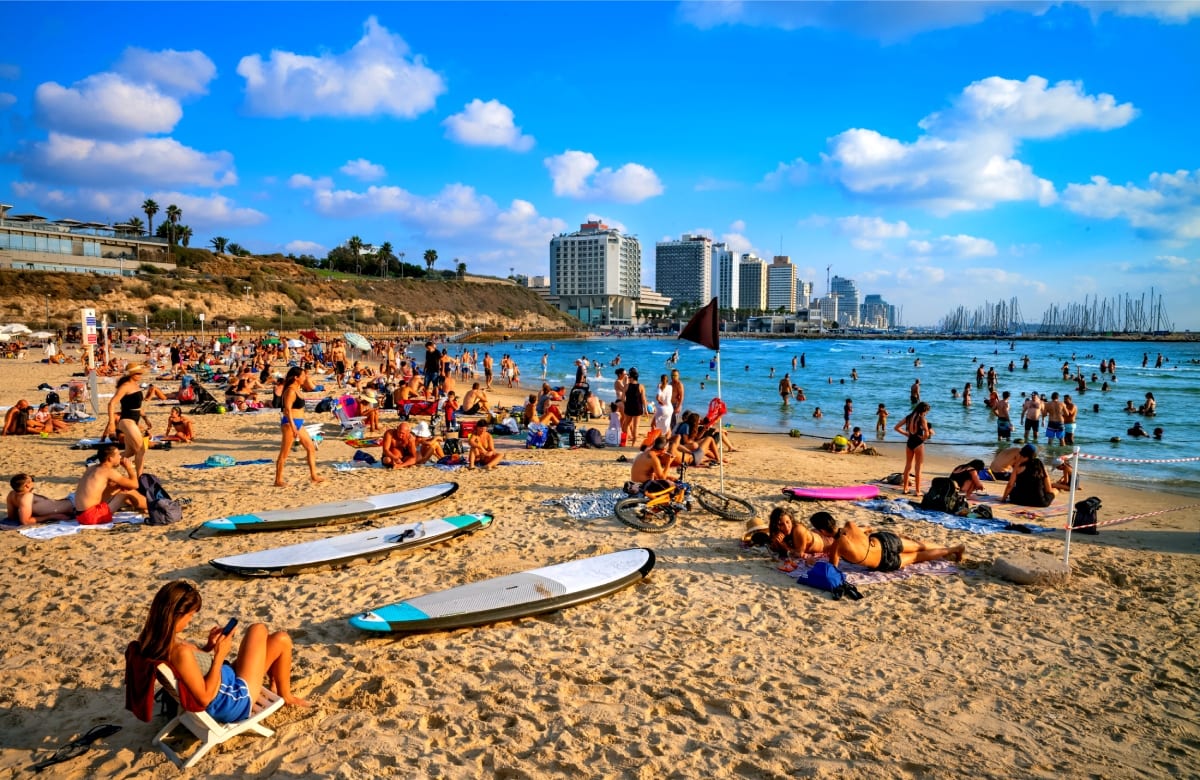WHERE TO STAY
WHERE TO EAT
WHAT DO DO
The history of Tel Aviv is a tale of visionary pioneers, urban growth, and cultural dynamism. Established in the late 19th century, the city has become a bustling metropolis and a center of innovation and creativity in the modern State of Israel.
Founding: Tel Aviv’s story began in 1909 when a group of Jewish families purchased land on the outskirts of the ancient port city of Jaffa (now a part of Tel Aviv) to establish a new neighborhood. Led by Akiva Aryeh Weiss, the pioneers sought to create a modern, Hebrew-speaking city that would serve as an alternative to the predominantly Arab-speaking Jaffa.
The First Hebrew City: On April 11, 1909, the first residential plot was sold in what would become Tel Aviv, and the city’s development officially began. The name “Tel Aviv” was inspired by the Book of Ezekiel in the Bible, referring to a hill of spring, symbolizing rejuvenation and new beginnings.
Rapid Growth: In its early years, Tel Aviv faced numerous challenges, including economic difficulties and tensions with the Arab residents of neighboring Jaffa. However, despite these obstacles, the city increased, attracting Jewish immigrants worldwide seeking a new life in the Land of Israel.
White City and Bauhaus Architecture: During the 1930s, a significant architectural movement emerged in Tel Aviv, influenced by the popular Bauhaus style in Europe. Many German Jewish architects who fled Nazi persecution brought their modernist ideas to the city, leading to the construction of the iconic “White City.” In 2003, UNESCO recognized Tel Aviv’s Bauhaus architecture as a World Cultural Heritage site.
Independence and Urban Expansion: Following the establishment of the State of Israel in 1948, Tel Aviv continued to grow and expand. It became a hub for new immigrants and was crucial to the country’s economic and cultural development.
Cultural Center: Tel Aviv has earned a reputation as Israel’s cultural capital, known for its vibrant arts scene, theaters, museums, galleries, and music venues. The city hosts numerous festivals, attracting local and international artists and performers.
Tel Aviv’s history is a testament to the indomitable spirit of its pioneers and the enduring vision of creating a modern Hebrew-speaking city in the Land of Israel. From its humble beginnings as a small neighborhood on the outskirts of Jaffa to its current status as a thriving metropolis, Tel Aviv continues to shape Israel’s cultural, economic, and technological landscape while preserving its rich historical heritage.
The Second Jewish wave of immigrants in 1904-1914 led to further expansion. In 1906, a group of Jews, among them residents of Jaffa, followed the initiative of Akiva Aryeh Weiss and banded together to form the Ahuzat Bayit (lit. “homestead”) society. One of the society’s goals was to form a “Hebrew urban centre in a healthy environment, planned according to the rules of aesthetics and modern hygiene.” The urban planning The first 60 plots were purchased Where Rothchild Boulevard is today, near Jaffa by Jacobus Kann, a Dutch citizen, who registered them in his name to circumvent the Turkish prohibition on Jewish land acquisition. Meir Dizengoff, later Tel Aviv’s first mayor, also joined the Ahuzat Bayit society. His vision for Tel Aviv involved peaceful co-existence with Arabs
Although founded in 1909 as a small settlement on the sand dunes north of Jaffa, Tel Aviv was envisaged as a future city from the start. Its founders hoped that in contrast to what they perceived as the squalid and unsanitary conditions of neighboring Arab towns, Tel Aviv was to be a clean and modern city, inspired by the European cities of Warsaw and Odessa. If would like some kind of an Israeli version of New York City.
On 11 April 1909, 66 Jewish families gathered on a desolate sand dune to parcel out the land by lottery using seashells. This gathering is considered the official date of the establishment of Tel Aviv. The lottery was organised by Akiva Aryeh Weiss, president of the building society. Weiss collected 120 sea shells on the beach, half of them white and half of them grey. The members’ names were written on the white shells and the plot numbers on the grey shells. A boy drew names from one box of shells and a girl drew plot numbers from the second box. A photographer, Abraham Soskin, documented the event. The first water well was later dug at this site, located on what is today Rothschild Boulevard, across from Dizengoff House. Within a year, Herzl, Ahad Ha’am, Yehuda Halevi, Lilienblum, and Rothschild streets were built; a water system was installed; and 66 houses (including some on six subdivided plots) were completed. At the end of Herzl Street, a plot was allocated for a new building for the Herzliya Hebrew High School, founded in Jaffa in 1906. The cornerstone for the building was laid on 28 July 1909.

In short, Absolutely! Tel Aviv is mostly flat. Plus the distances are relatively small and apart from July-August, the weather is amazing. In addition, the city is safe, so you’re not likely to run into trouble exploring the city. I recommend using a pair of sneakers (or sandals if you’re visiting from April-September). In the summer months, you should have in reach a water bottle with you, as it gets very hot and quite humid.






Join our community and get exclusive travel tips, giveaways and more!
THE GO-TO DESTINATION FOR TAILOR MADE & SIGNATURE